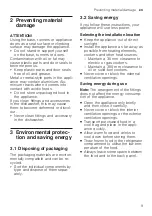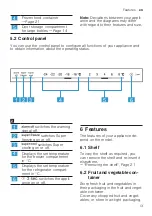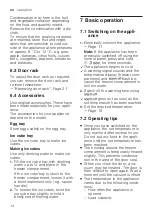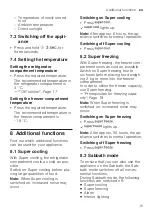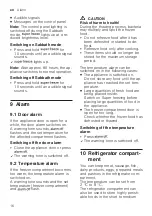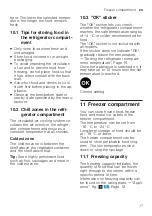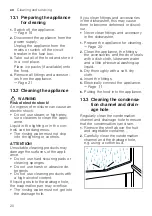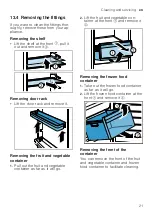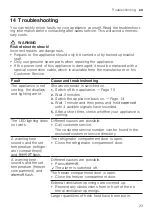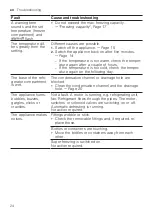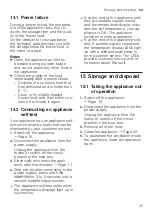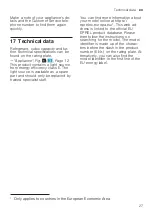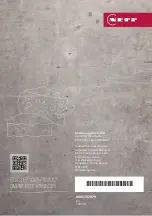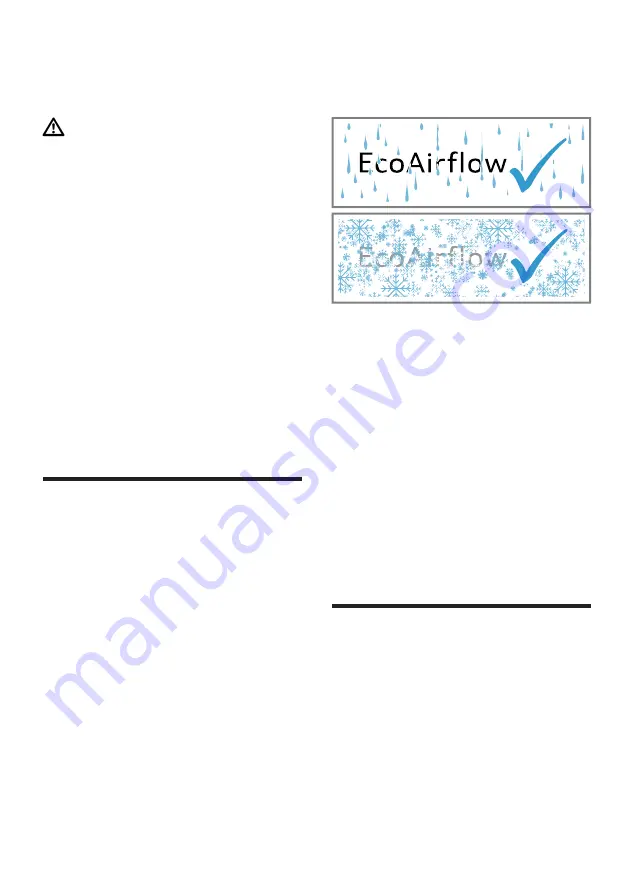
Defrosting
en
19
11.6 Defrosting methods for
frozen food
CAUTION
Risk of harm to health!
During the thawing process, bacteria
may multiply and spoil the frozen
food.
▶
Do not refreeze food after it has
been defrosted or started to de-
frost.
▶
Refreeze food only after cooking.
▶
These items should no longer be
stored for the maximum storage
period.
¡
Defrost animal-based food, such
as fish, meat, cheese, quark, in the
refrigerator compartment.
¡
Defrost bread at room temperat-
ure.
¡
Prepare food for immediate con-
sumption in the microwave, in the
oven or on the hob.
12 Defrosting
12.1 Defrosting in the refri-
gerator compartment
When the appliance is operating,
condensation droplets or frost form
on the rear panel of the refrigerator
compartment due to functional reas-
ons. The back panel in the refriger-
ator compartment defrosts automatic-
ally.
Condensation runs through the con-
densation channel into the drainage
hole to the evaporation pan and does
not have to be wiped away.
To ensure that the condensation can
drain and odours do not form, ob-
serve the following information:
→
"Cleaning the condensation chan-
nel and drainage hole", Page 20
12.2 Defrosting in the freezer
compartment
The fully automatic NoFrost system
ensures that the freezer compartment
remains frost-free. Defrosting is not
required.
13 Cleaning and servi-
cing
To keep your appliance working effi-
ciently for a long time, it is important
to clean and maintain it carefully.
Customer Service must clean inac-
cessible points. Cleaning by cus-
tomer service can give rise to costs.





